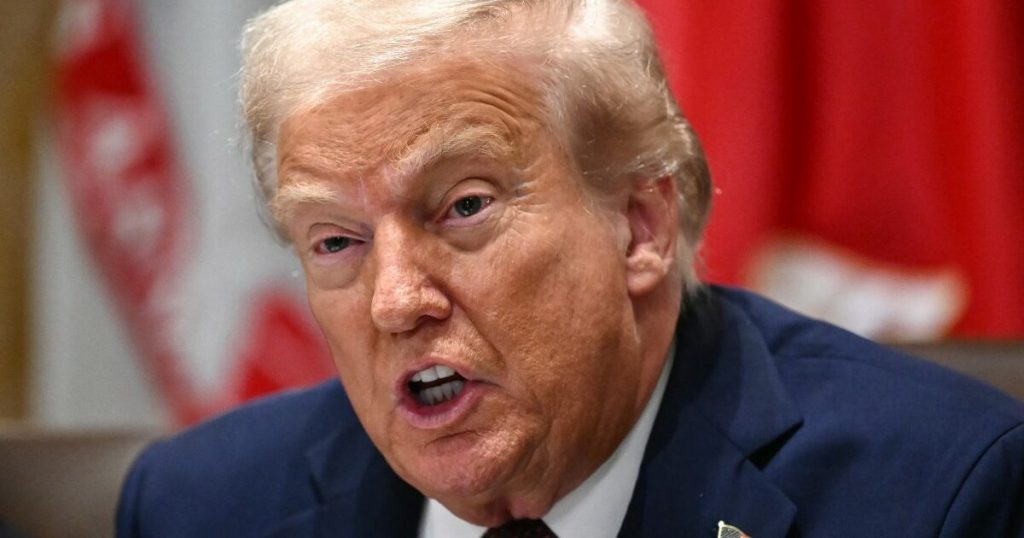Paragraph 1: The Proposed Rebranding of the Department of Defense
President Donald Trump’s administration announced a proposed change to the Department of Defense’s name, reverting to its historical designation, the Department of War. While the official name change requires congressional action, Trump intends to implement this change through an executive order, authorizing the use of “Department of War” and “Secretary of War” as secondary titles in official communications, public pronouncements, ceremonial events, and non-statutory documents within the executive branch. This move reflects Trump’s belief that the current name, “Department of Defense,” projects an image of passivity, while “Department of War” embodies strength and resolve.
Paragraph 2: Trump’s Rationale for the Name Change
Trump has repeatedly expressed his dissatisfaction with the “defensive” connotation of the current name, arguing that the “Department of War” represents a time of American military triumph in World War I and World War II. He sees this name change as a symbolic gesture aimed at projecting an image of strength and decisiveness to both domestic audiences and international adversaries. The White House document supporting the change emphasizes its intention to signal America’s unwavering commitment to protecting its national interests, even through military action.
Paragraph 3: Historical Context of the Department of War
The Department of War has a long and complex history within the American governmental structure. Established in the nascent stages of the nation’s independence, it originally oversaw the country’s land forces. Following World War II, a significant reorganization of the military and government led to the consolidation of the War Department, the Navy, and the newly established Air Force under the National Military Establishment, which was subsequently renamed the Department of Defense in 1949. This consolidation aimed to create a unified and coordinated approach to national defense.
Paragraph 4: Pete Hegseth’s Influence and the “Warrior Ethos”
The proposed renaming of the Department of Defense comes in the wake of other significant changes at the Pentagon under Trump’s leadership, including the appointment of Pete Hegseth, a former Fox News host and combat veteran, as Secretary of Defense. Hegseth has been a vocal advocate for restoring what he terms a “warrior ethos” within the military, criticizing previous administrations for policies perceived as overly accommodating or “woke.” Hegseth’s influence is evident in initiatives such as seeking to reverse policies allowing transgender individuals to serve openly in the military and renaming military bases that honor Confederate figures back to their original designations, actions that align with Trump’s own political stances.
Paragraph 5: Potential Reversal and Permanence of the Name Change
While Trump’s executive order enables the use of the “Department of War” title within his administration, it does not legally change the department’s official name. This means that a future president could easily rescind the order and revert to the current naming convention. However, the executive order also directs the Secretary of War (Hegseth in this scenario) to propose both legislative and executive actions aimed at permanently changing the department’s name. This suggests Trump’s intention is not merely symbolic but also to lay the groundwork for a more lasting alteration to the military establishment.
Paragraph 6: Symbolic Significance and Potential Impact
The proposed name change, though ostensibly symbolic, carries significant weight in terms of projecting a particular image of American military posture. Critics argue that the “Department of War” evokes an unnecessarily aggressive and militaristic stance, potentially escalating tensions with other nations. They also argue that the change disregards the significant historical reasons for the 1949 shift to the Department of Defense, which sought to integrate different branches of the military into a cohesive unit. Supporters, on the other hand, view the change as a necessary correction, restoring a sense of strength and resolve to the American military identity. The long-term impact of this proposed change, both domestically and internationally, remains to be seen. It will likely depend on the outcome of future legislative efforts and the direction taken by subsequent administrations.














